April 2025 Texas Wildflowers:
We knew the wildflowers were not going to be as nice this year due to the below normal rainfall in all but eastern Texas, but we enjoyed finding small patches of flowers where we could.
Drummond Phlox (Phlox drummondii) along Hwy 290 near Hempstead.
Texas Bluebonnets (Lupinus texensis) next to the Baptist Church at Chappell Hill. There were a couple of nice fields of Bluebonnets around Brenham area but in general they were sparce.
The Pipevine Swallowtail caterpillar (Battus philenor larva) was hanging out on a paintbrush at the old Baylor site in Independence TX. This caterpillar is toxic and feeds exclusively on pipevine to acquire the toxins. The Pipevine Swallowtail butterfly is a mostly black some blue and orange on the hindwings.
Karin is in a field of Texas Bluebonnets (Lupinus texensis) and Texas Paintbrushes (Castilleja indivisa) on Old Gay Hill Road north of Brenham, TX. The flowers were shorter and more sparce than previous years due to the low rainfall but a pretty sight anyway.
We hiked in Enchanted Rock State Natural Area north of Fredericksburg. Often there are flowers here even when the conditions are very dry because any rainwater runs off the granite into pools or low spots. We did find some flowers but much less than normal. Above are Buttercups we found in Echo Canyon. Not sure about the exact species (there are 18 species of Ranunculus (Buttercups) in Texas).
We were surprised to find White Water Lilies (Nymphaea odorata) in Moss Lake at Enchanted Rock as we had never seen this before. I asked a park ranger about this and they indicated they were native but rarely were seen – only sometimes after rains. Enchanted Rock rises 425 feet above the base elevation of the park in the background. We had lunch on the shoreline next to the water lilies.
A close up of the White Water Lily.
Another view of Enchanted Rock and Echo Canyon to the right reflected in the Moss Lake.
Karin in Turkey Pass with Enchanted Rock in the background. I later climbed to the top of Enchanted Rock but the view was obscured by the low clouds and threating rain. Then we were off to Sandy Road Vineyards for a glass of wine and some chocolate.
On the way Home we detoured through Spicewood, TX and visited Muleshoe Bend to check out the Bluebonnets. There were patches of the flowers, but they were smaller blooms and not as thick as last year. Hopefully more rain and a better season next year!
***************************
From April 2024:
We made a second 2024 Texas wildflower trip, this time to the Texas Hill country around Fredericksburg. This area had been a disappointment for wildflowers for a couple of years due to the extreme drought; however, parts of the area received more rain late 2023 and early 2024 so the wildflowers rebounded (The area is still considered to be in drought conditions). It was curious that some areas had massive displays of wildflowers and other areas very little flowers – maybe based on where there was more rain…
Caught this Grey Hairstreak butterfly (Strymon melinus) feeding on a Firewheel (Gaillardia pulchella var. pulchella) on the way to Bastrop.
On the Oak Creek Farm on Tx2721 east of Fredericksburg, we found this massive field of Pairie Verbena (Glandularia bipinnatifida). The sweet fragrance saturated the air.
On the Willow City Loop north of Fredericksburg, we found the Texas Prickly Poppies (Argemone aurantiaca) blooming in mass again. Last year, there were almost none due to the lack of rain. These plants were about 2 feet high. Cattle avoid the distasteful Prickly Poppies.
Here we are in a mass of Texas Bluebonnets (Lupinus texensis), the state flower. These were still blooming even this late in the season, but they were past their prime with many plants already forming seeds.
We saw many yellow carpeted fields. In this one, Coreopsis (Coreopsis basalis, I think) provided the massive display of “yellow”.
Karin in a mix of Texas Bluebonnets, Texas Paintbrushes, and an unidetified yellow flower along RM1323
This lone young tree in the field of Texas Paintbrushes (Castilleja indivisa) caught my eye…
Also on RM1323 was this field of Bluebonnets.
It had been a few years since we saw any of these Pink Mimosas (Mimosa borealis) blooming. This is a small thorny bush.
We spent the better part of the day hiking and looking at flowers in Enchanted Rock Natural Area north of Fredericksburg. This photo gives an idea of the dense wildflowers in some areas along the roads. These displays were only in certain spots where there had been rain (and wildflower seed distributed by the state of Texas). This road did not have any places to pull over, so I jumped out of the car for a quick shot before the next car caught up with me. Enchanted rock is the massive pink granite dome in the center.
Most of the time in the spring, you can find these Giant Spiderwort (Tradescantia gigantea) at Enchanted Rock and they were very abundant this year. The stems of the flowers are about 18 to 24 inches tall with a cluster of flowers at the top that are only a couple of inches in diameter. The flower color can be an indicator of the PH of the soil. Acidic soils produce bluer flowers, while more alkaline soils create varying shades of pink and purple. We also saw just a couple of white blooms.
Karin is doing yoga in a patch of Greenthread (Thelesperma filifolium). The crushed leaves of Greenthread offer a pleasant aroma and can be made into tea, which is sometimes used medicinally by several Native American tribes. This is especially widespread among southwest tribes, where it is named Navajo tea, or Hopi tea.
We only found 2 blooms on Prickly pear cactus (Opuntia lindheimeri) but there were many unopened blooms. There should be lots of cactus flowers in the near future.
Greenthread and Paintbrushes at Enchanted Rock.
Greenthread all around the Prickly Pear catus at Enchanted Rock – The Greenthread was really putting on a show!
Karin hiking along a large patch of Greenthread in Turkey Pass of Enchanted Rock.
Karin is resting her arms on the rocks near the end of the Turkey Pass trail at Enchanted Rock.
Looking up towards the top of Enchanted Rock there was a cloud drifting by that looked like it was coming out of the top of the granite dome.
I hiked up to the summit of Enchanted Rock again. The vernal pools in the otherwise solid granite at the top were lush with flowers, grass and cactus.
North of Fredericksburg, there was a stretch of road that was really loaded with flowers. In this photo the Coreopsis, Firewheels, and Paintbrushes were dominant.
In other areas it was Greenthread, Firewheels and Paintbrushes.
This Texas soldier beetle (Chauliognathus scutellaris) climbed into my photo of some Engelmann’s Daisies (Engelmannia peristenia)
A pair of Texas Bluebonnets are surrounding Prairie Phlox (Phlox pilosa).
We visited a new area that we heard had a mass of Bluebonnets: Muleshoe Bend Recreational Area along the northern end of Lake Travis near Spicewood Texas. We found a very large field of Bluebonnets but many had already gone to seed. Karin is doing some yoga amongst the still blooming Bluebonnets we found along the water’s edge. We plan to visit this area in the future (it helped that there was a nice winery (Spicewood Vineyards) and a great BBQ place (Odie’s BBQ) both in Spicewood, Texas.
From March 2024:
Another early great year for Texas wildflowers. The brutal hot and dry 2023 summer was followed by more rain in the fall and a warm beginning of the year to produce an abundance of wildflowers in certain areas. We toured around Washington County the week of March 18th for a couple of days before heavy rain chased us home.
This was the year for massive fields of bright yellow flowers (althought not not all the same flowers). We saw yellow fields of Field Buttercups, Butterweed, and Yellow Top (close relative to Butterweed).
This field of Field Buttercups (Ranunculus arvensis) on Hwy 290 between Hempstead and Chappell Hill was so thick with flowers it looked like a yellow carpet. The flowers are only about 1/2 inch in diameter so there must have been millions to cover the ground so thickly and with so much area.
The Texas paintbrushes (Castilleja indivisa) were blooming in mass. This patch was on TX 158 between Bellville and Industry in Austin Co.
Here are the yellow Butterweed (Senecio glabellus) and a few blue Texas Bluebonnets (Lupinus texensis) in a field in Industry, Tx in Austin Co.
Our first thick field of Texas Bluebonnets (Lupinus texensis) and Paintbrushes (Castilleja indivisa) was north of Industry on the Lahrmann Homestead.
Close up photo of Texas Bluebonnets and Paintbrushes on Old Mill Creek Road.
On Hummingbird Rd, we found this large field of Texas Toadflax (Nuttallanthus texanus) with the yellow Butterweed (Packera glabella) in the background. There was an old iron gate with the name “Randeemann Quarter Horses” but here was no fence or any horses to be seen.
Karin and I are at the edge of the “Randeemann Quarter Horses” field with the Butterweed (Packera glabella).
More Texas Bluebonnets on Zibilski Road with a solitary Paintbrush.
We found this old cabin on Longpoint Road with the invasive India mustard (Brassica juncea) in the foreground. The flower is a native of Eurasia and considered a weed.
We always find “new to us” flowers and this year was no exception. We found this Golden (or Fringed) puccoon (Lithospermum incisum) on Longpoint Road, The roots of this plant yield a red dye that was used by Native Americans and early settlers and still used today to dye wool for weaving. The root was also used for several medicinal purposes. On this same road we also found two other “new to us” flowers: Fender’s Bladderpod (Physaria fendleri) and Sandwort (Arenaria drummondii).
Close up of the Texas Paintbrush (Castilleja indivisa) with blury purple Pointed Phlox in the background. The red of the paintbrush are acutally part of the leaves. The flower of this plant are the yellow-green structures at the top of the plant. There are 4 other red paintbrushes found in Texas: Whole Leaf, Woolly, Lindeheimer’s, and Rigid and one yellow one: Lemon Paintbrush for a total of 6 different ones.
A mix of Pointed Phlox (Phlox cuspidata), purple, Texas paintbrushes, red, and Texas Yellow Stars (Lindheimera texana), yellow,
Randy and Karin on the edge of a large field of Texas Paintbrushes and Bluebonnets along the north end of Old Gay Hill Rd across the street from a church.
Texas Bluebonnets in a rocky depression with a small pond on Old Gay Hill Road. Unusual to see any rocks in Washington Co.
Some more yellow fields but this time with Butterweed (Packera glabella) as far as the eye could see. These were on FM390E on both sides of the road.
Here is a field of Texas Paintbrushes with a few Texas Bulebonnets at the corner of FM2621 and Palestine Rd.
We had planned to tour Washington Co more but we were rained out……..Good for the flowers, but not for the camera…
*********************************
From 2023:
We found more 2023 Wildflowers during a trip out to Fredericksburg. The wildflower season came early this year, so we missed the peak with this preplanned trip but we still found flowers and even some new ones (to us).
Near Smithville on Hwy71, we saw this field of Showy Primrose (Oenothera speciosa).
Also near Smithville a little further down Hwy 71 there was this massive field of White Prickly Poppy (Argemone albiflora subsp. texana). The bees and other insects seek out the abundant pollen but all other parts of the plant are somewhat poisonous. Cattle avoid this plant even when there is nothing else to eat.
This Prairie Penstemon (Penstemon cobaea) was along the road in clusters. Also known as Foxglove. Early settlers brewed a tea from the leaves to use as a laxative.
Our trip was not just about wildflowers! We met up with my sister-in-law, Michelle, to enjoy a lunch and wine at the Texas Hills Vineyards.
Texas Paintbrushes (Castillerja indivisa) in a ditch along the road to Fredericksburg. More White Prickly Poppy in the distance.
There was an abundance of Greenthread (Thelesperma filifolium) around Fredericksburg. This was in Enchanted Rock Natural area.
We are always finding new flowers. This is an Evening Rain Lily (Cooperia drummondii) that typically only flowers for a day or so after a rain. It is not rare, but catching it blooming is all about timing.
Randy in Echo Canyon of Enchanted Rock Natural Area on a hike.
The Prickly Pear Cactus (Opuntia engelmannii) was blooming in Enchanted Rock, Almost every bloom had a bee inside that had spent the night and was waiting to warm up before “getting back on the job” of gathering nectar and pollenating flowers.
Texas Paintbrush and Greenthread in Enchanted Rock.
Evening Rain Lily with Turkey Peak in the background in Enchanted Rock Natural Area.
We found fields of this Mealy Sage (Salvia farinacea) along the road to Enchanted Rock.
Englemann Daisies (Engelmannia peristenia) on a road outside Fredericksburg near Sandy.
Karin at a wine tasting at Sandy Road Vineyards that we stumbled upon while looking at wildflowers. A great little winery off the beaten path.
Randy taking flower photos in Inks Lake State Park. while hiking the trails
A new flower for us was this Pinkflower Hedgehog cactus (Echinocereus fendleri ). We have previously seen the Claret Cup Hedgehog cactus which has a red flower but not this pink one. Found several of these in Inks Lake State Park.
Some more Showy Primrose in Brenham Tx.
In Brenham Tx, the Texas Paintbrush was “finishing up” (you can see the brown leaves along the bottom of the stalks – the red of the flower is actually the leaves and the flower of the plant is composed of small green/yellow spikes at the top of the plant). The white flower is Prairie Bishop’s Weed (Bifora americana) and is part of the parsley family.
Another new flower to us was the Coralbean (Erythrina herbacea L) that we found north of Brenham. The Coralbean (or also called Cherokee bean, Mamou plant in South Louisiana, red cardinal, or cardinal spear) is a native flowering shrub in the south. Seeds are poisonous to humans if eaten.
********************
2023 was a much better year for Texas Wildflowers due to more rain in the fall of 2022. The warmer weather resulted in early flowers. The next few photos are from nearby Washington and Austin counties.
Texas Paintbrush (Castilleja indivisa) were very prolific and early this year as was the Texas Bluebonnets ((Lupinus texensis). It was very windy when this photo was taken and the sweet fragrance of the Bluebonnets was a treat to the nose. This photo was taken on Gay Hill Road, northwest of Brenham.
Texas Bluebonnets along William Penn Road, northeast of Brenham. There were several large fields of different flowers along William Penn Road.
A field of Butterweed (Senecio glabellus) along William Penn Road.
Texas Paintbrush and Bluebonnets along William Penn Road.
Just a few Lemon Paintbrush (Castilleja purpurea var. citrina) along William Penn Road
Drummond Phlox (Phlox drummondii) in a meadow in Washington on the Brazos State Park.
Baby Blue-Eyes ((Nemophila phacelioides) in Washington on the Brazos State Park.
Texas Bluebonnets and Paintbrushes in the front yard of a ranch on US highway 290
Bluebonnets at the entrance of that same ranch.
Layers of Bluebonnets, then Butterweed, then Paintbrushes in a field on Chadwick-Hogan Road southwest of Brenham.
More Butterweed along Chadwick-Hogan Road
Drummond Phlox (red) and Paintbrushes in a front yard in Welcome, Texas. (and two lonely Bluebonnets on the right)
Last year there was an amazing spread of Phlox north of Industry, Texas but not this year. We did find this field of bluebonnets with butterweed and phlox in the ditch. We had a picnic lunch at a park in Industry and took the time to look at a historical marker. We did not realize that Industry was the oldest German settled town in Texas, founded in 1831. Industry had a cotton gin and the surrounding area in Austin County was a major cotton producing area. The cotton gin started as mule powered, upgraded to steam, then diesel before baling the last bale of cotton in Austin county and shutting down in 1973.
Another nice field of Bluebonnets along FM109 between Industry and Brenham, TX.
We found a new (to us) flower and had some trouble identifying it. This is Mediterranean Lineseed (Bellardia trixago). As it turns out, this is not a native of Texas, but originates from along the Mediterranean (from Spain to the middle east). It first was found in Texas in the 1970’s and also can now be found in Australia, Argentina, Chile, and several other countries. Not sure where the name came from since the plant is not known as “Mediterranean Lineseed” in the native Mediterranean.
************************
From 2022:
Karin spotted these Texas Bluebells (Eustoma exaltatum) behind the grocery store in a field in Baytown. We have never seen them here before…. The flowers were about 2-3 inches in diameter but can be up to 4 inches. Texas Bluebells are in the Gentian family (not a true bluebell) -June 5, 2022
Coreopsis and Firewheels blooming in the Old City Cemetery in Galveston. Saw this great display of wildflowers in this cemetery along Broadway – Ave J while visiting Galveston. I was not prepared and did not have my camera (this photo from iPhone 13 mini) – April 26, 2022
From March thru mid April 2022 we made several trips to view flowers in Texas along with a bit of hiking:
First we visited the blooming dogwood trees in east Texas, then the wildflowers of Washington County and surrounding area, then the wildflowers to/from/around Fredericksburg, TX and Enchanted Rock, and lastly back to Washington County.
Flowering Dogwood trees (Cornus florida L) in Davey Dogwood Park in Palestine, Texas
Karin, strolling down the road in Davey Dogwood Park.
Blooming Dogwood in Mission Tejas State Park.
Butterweed (Senecio glabellus) in a field near Crockett, TX (east Texas).
Texas Bluebonnets (Lupinus texensis) in a field next to the First Baptist Church in Chappell Hill Texas. This was a large field of Bluebonnets that was easily accessible. The sweet fragrance of the Bluebonnets was a delight to the nose and so was the visual beauty to the eyes.
The red of the Texas Paintbrush (Castilleja indivisa) mixed with the Texas Bluebonnets in a field next to the grape vines of Pleasant Hill Winery close to Brenham Texas.
We spotted this old tractor in a field of Drummond Phlox (Phlox drummondii subsp wilcoxiana) off of FM109 in Welcome.
We drove toward Industry, Tx but were not seeing many flowers until we returned on Hwy 159 just a few miles north of the town and found the thick field of Dummond Phlox. The color was amazing!
A week later we were in the Fredericksburg area and were finding almost no flowers due the very dry conditions. We did hike in the Enchanted Rock Natural Area and found some flowers where the little bit of rain had been funneled by the granite into some areas. In the photo, Karin is enjoying the view down Echo Canyon.
Ohio Spiderwort (Tradescantia ohioensis) in Enchanted Rock.
The Texas Buckeye trees (Aesculus glabra var. argutawere) were blooming in Echo Canyon of Enchanted Rock,. This was the first time I had seen this.
There was new bright green foliage on Mesquite trees near Moss Lake in Enchanted Rock.
Karin spotted a Texas Coral snake (Micrurus tenernear) near Moss Lake in Enchanted Rock. The coral snake is one of the few poisonous snakes in Texas. The coral snake has fixed small fangs and they do not inject venom. So rather than biting quickly and letting go (like vipers), coral snakes tend to hold onto their prey and make chewing motions when biting to deliver a neurotoxin from their saliva. Recent studies on the bites of at least the Texas Coral snake have shown that these bites rarely require antivenin, don’t usually show any systemic respiratory problems, but can be intensely painful. The snake is not very aggressive (and this case was leaving as fast as it could). In the USA, the non-poisonous Milk Snake and the King Snake look very similar but the red-yellow-black banding is in a different sequence – I remember it by the phrase “Red and Yellow kill a fellow” so when the red and yellow bands are next to each other, it is a coral snake. This is true in the USA (but for some species of coral snakes in Central and South America this is not true). In the non-poisonous Milk and King snakes the black band is next to the red and the yellow is not next to the red. Coral snakes bites are rare – 1% of the poisonous snake bites in the USA. I have been hiking for years and it has been rare to see snakes on the trail and this was the first coral snake I have seen in the wild. (However, after seeing this snake, we did exercise a bit more caution wandering off the trail to look at flowers….)
We found this small clump of Blue Curls (Phacelia congesta) in Enchanted Rock but did not notice the small insects on the blooms until looking at the photos on the computer monitor.
A view in Turkey Pass at the northern base of Enchanted Rock with several hoodoos.
This Scarlet Hedgehog cactus (Echinocereus triglochidiatus) was blooming along the trail in Turkey Pass – beautiful bloom but wicked thorns. Also known as the Claret Cup Cactus.
A view to the north from the summit of Enchanted Rock. Echo Canyon is below in the foreground.
Amazing how these wild Texas Bluebonnets grow in such straight lines! (not wild) This photo is at the Texas Wildseed Farm east of Fredericksburg where wildflowers are cultivated for seeds. Besides individual demand for wildflower seeds, the Texas Department of Transportation buys and sows about 30,000 pounds of wildflower seed each year. The peak wildflower blooming season draws tourists from all across the nation to see the color unfold each spring.
A Texas Paintbrush (Castilleja indivisa) along Hwy 159 east of La Grange, TX. (Also a blurry Firewheel and Missouri Primrose in the background)
Showy Primrose (Oenothera speciosa) and Texas Bluebonnets along FM2502 in Washington County.
Combination of Crimson Clover (Trifolium incarnatum), Showy Primrose and Texas Paintbrushes on FM2502 in Washington County.
Crimson Clover (Trifolium incarnatum)
Wine-Cup (Callirhoe involucrata) also known as the poppy-mallow along FM 2502
This horse was grazing around the Showy Primrose on Salem Rd near Brenham TX.
Bluebonnets and Tx Paintbrushes in the front yard on Cedar Hill Road north of Brenham TX.
Found this field of Coreopsis (Coreopsis basalis) on our way home on Van Wle road north of Hempstead, Tx.
We were not the only ones that found this large field of Coreopsis – another photographer was shooting these ladies in red.
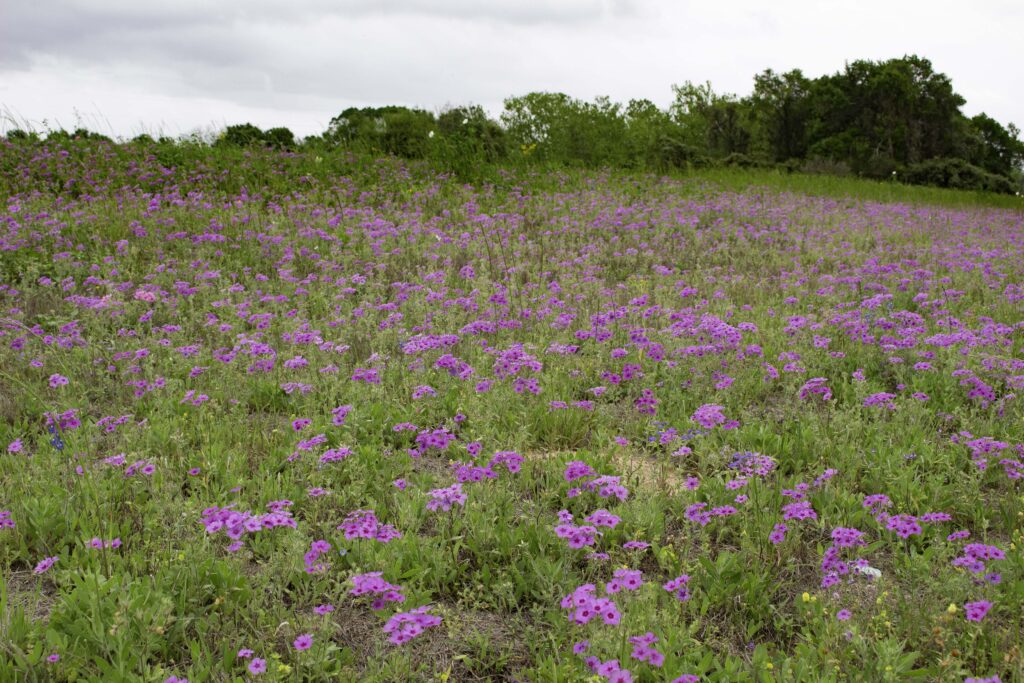

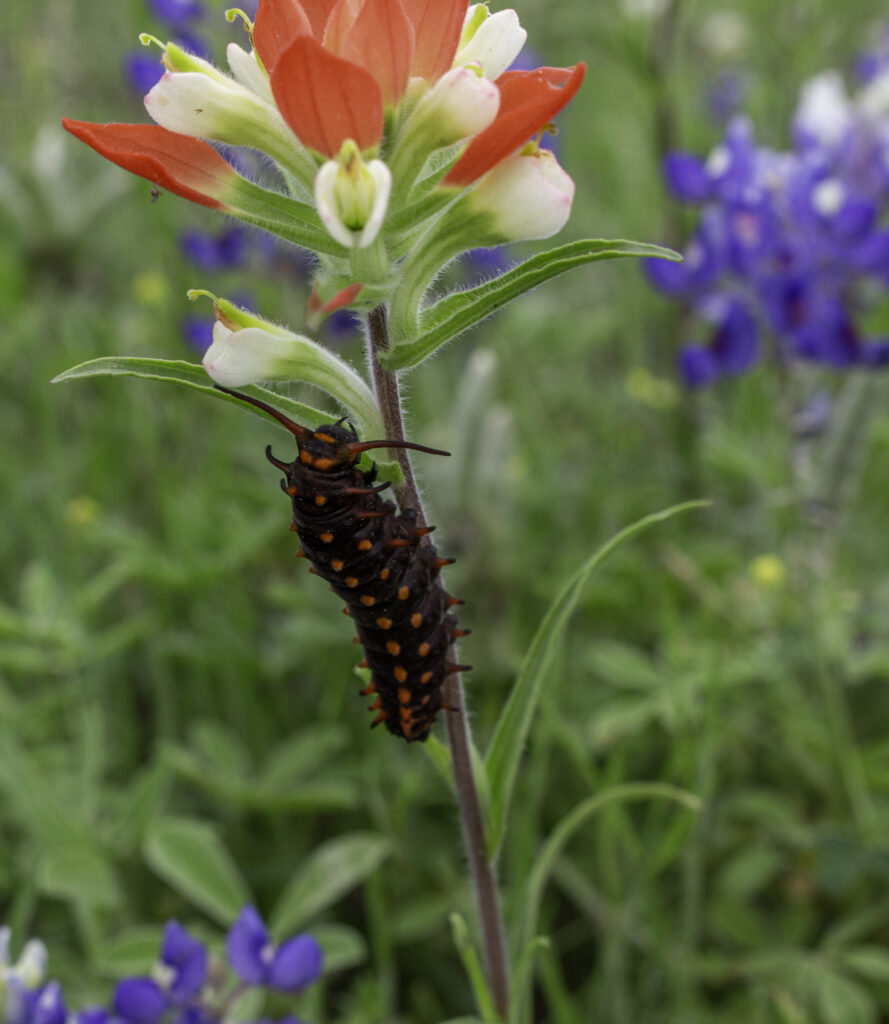
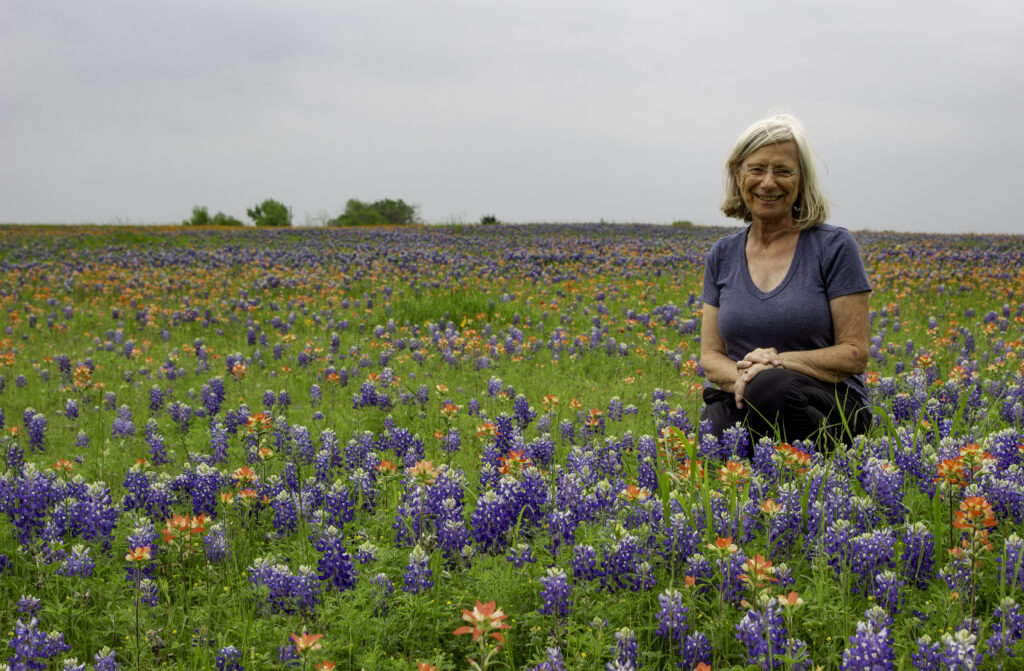




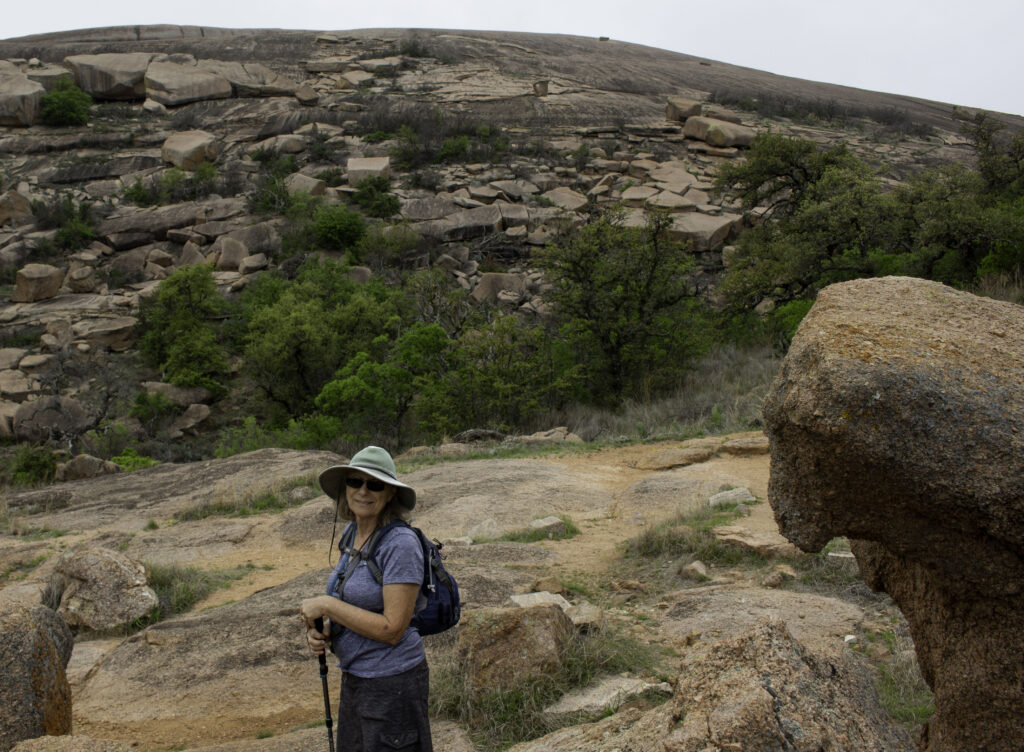





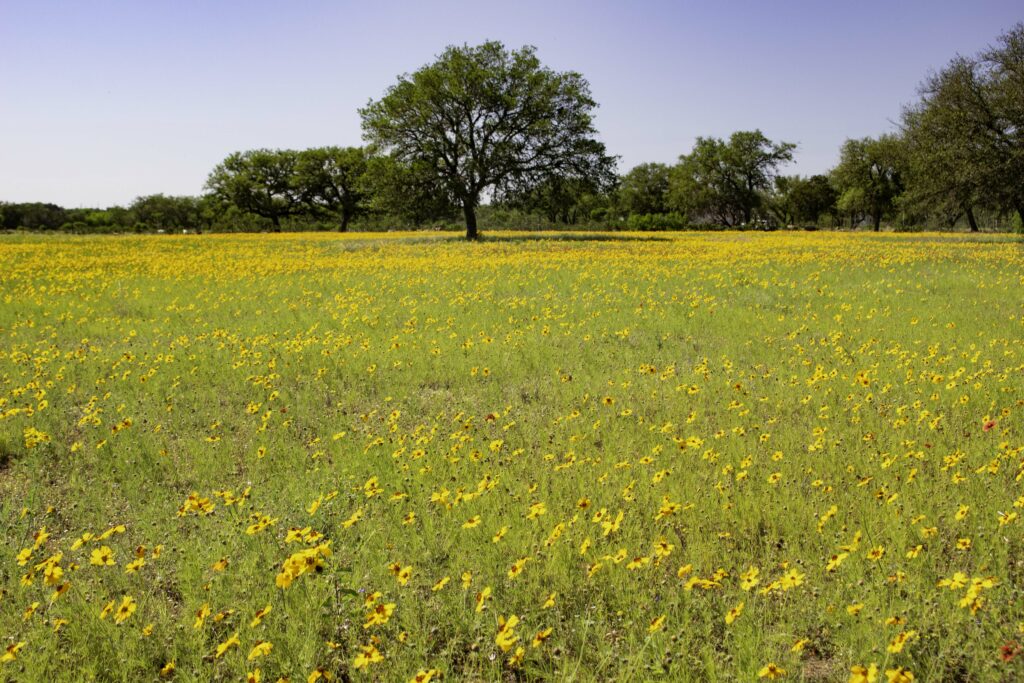
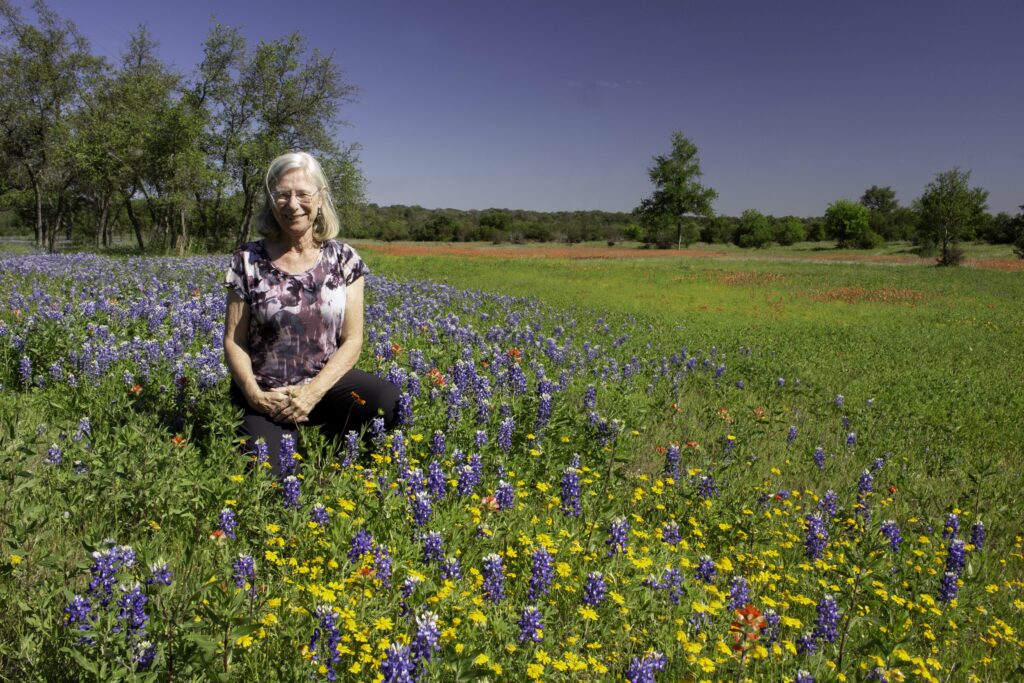
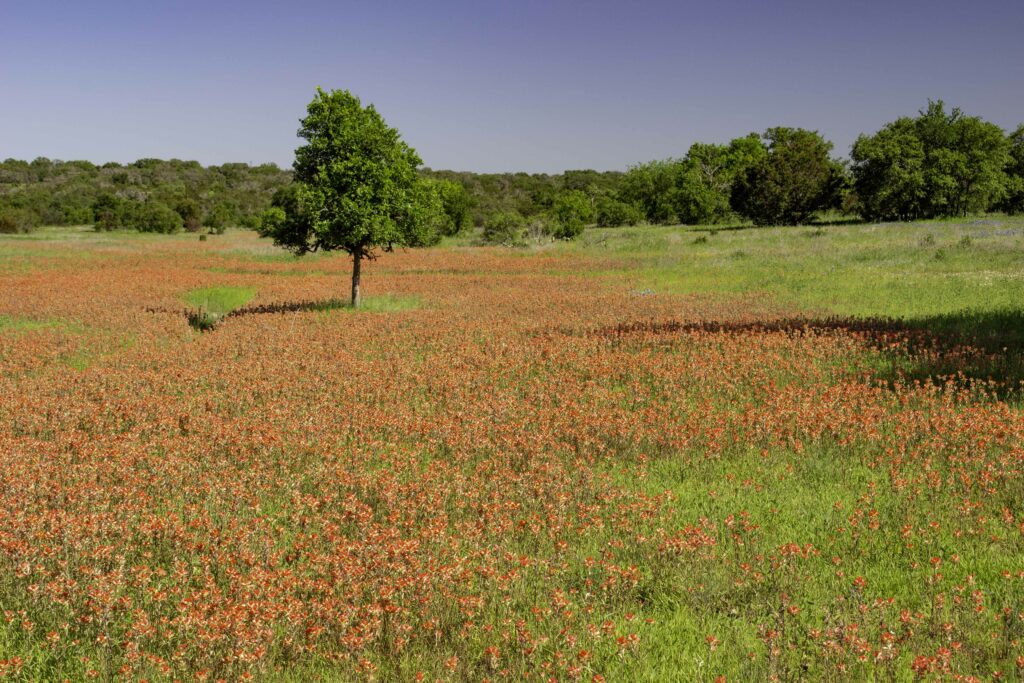

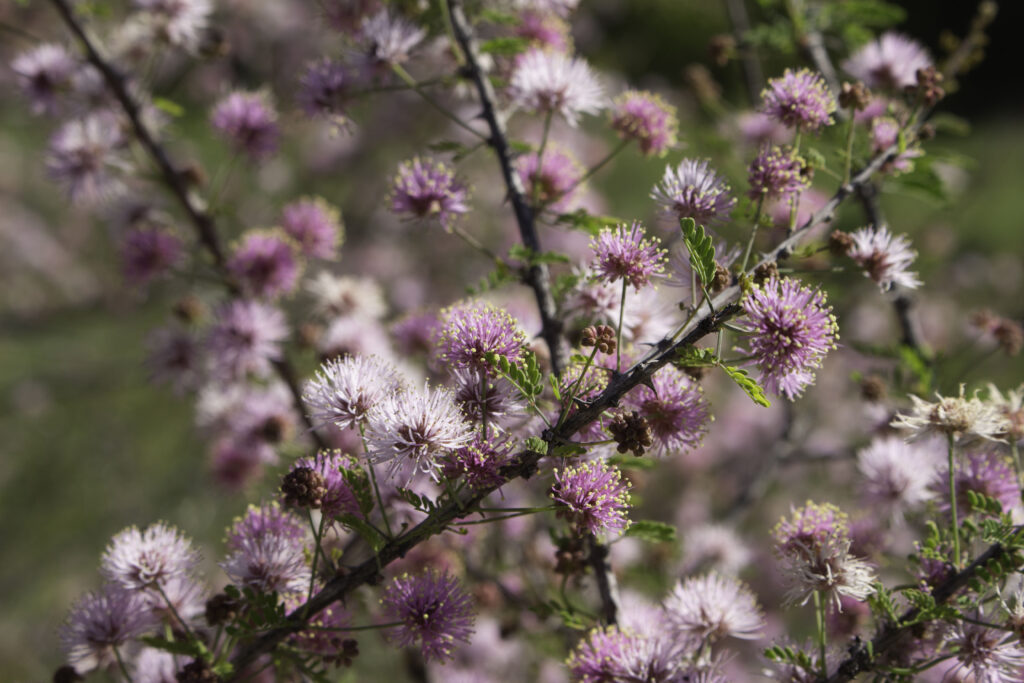


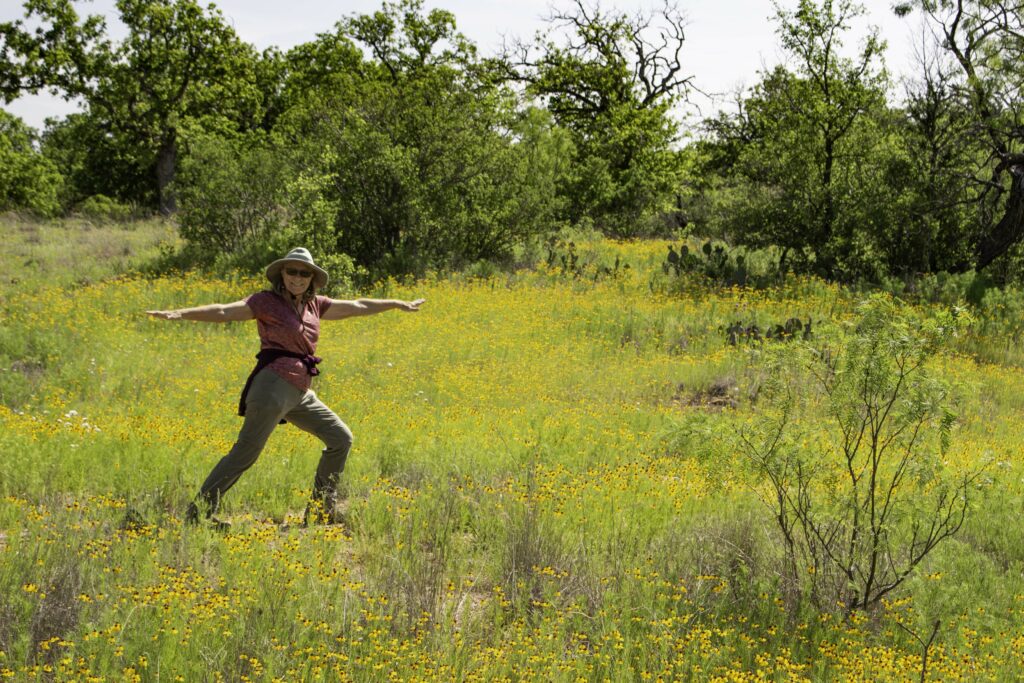
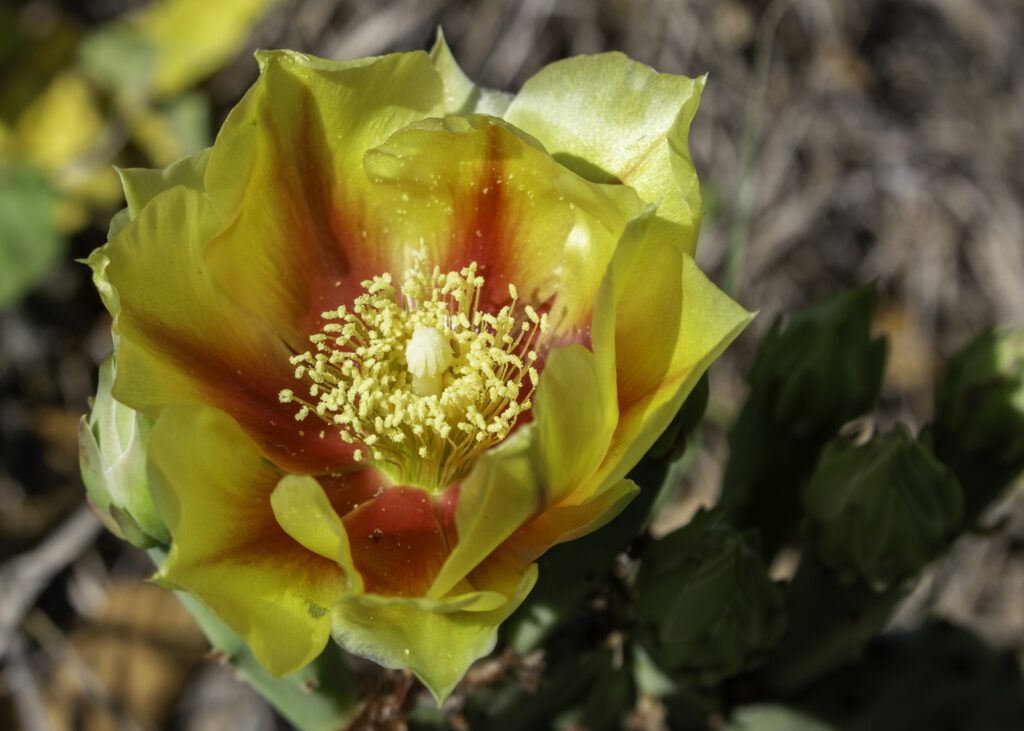







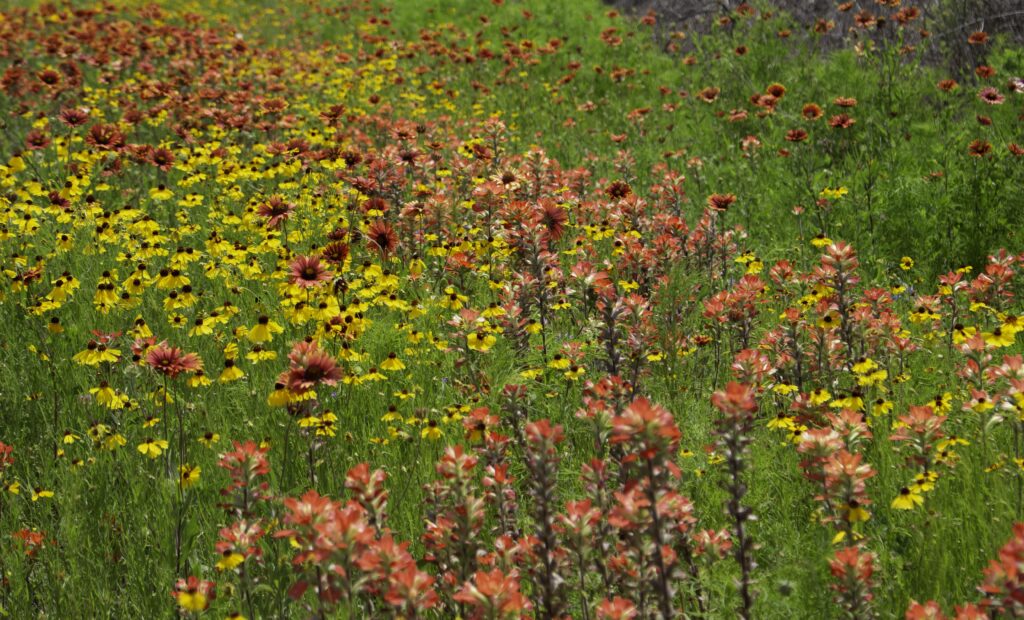








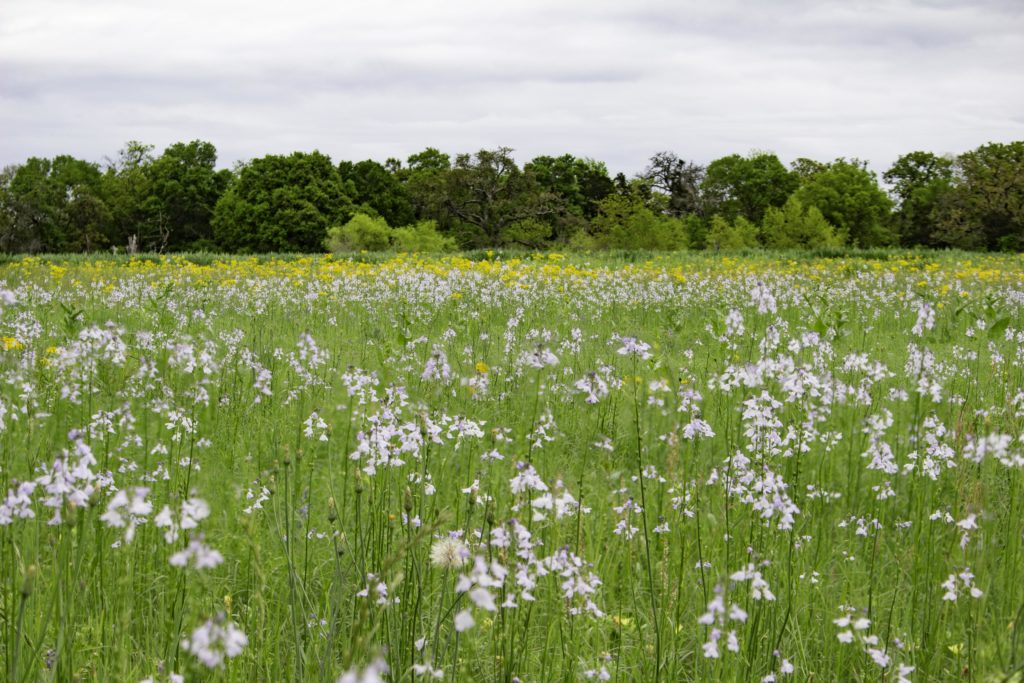
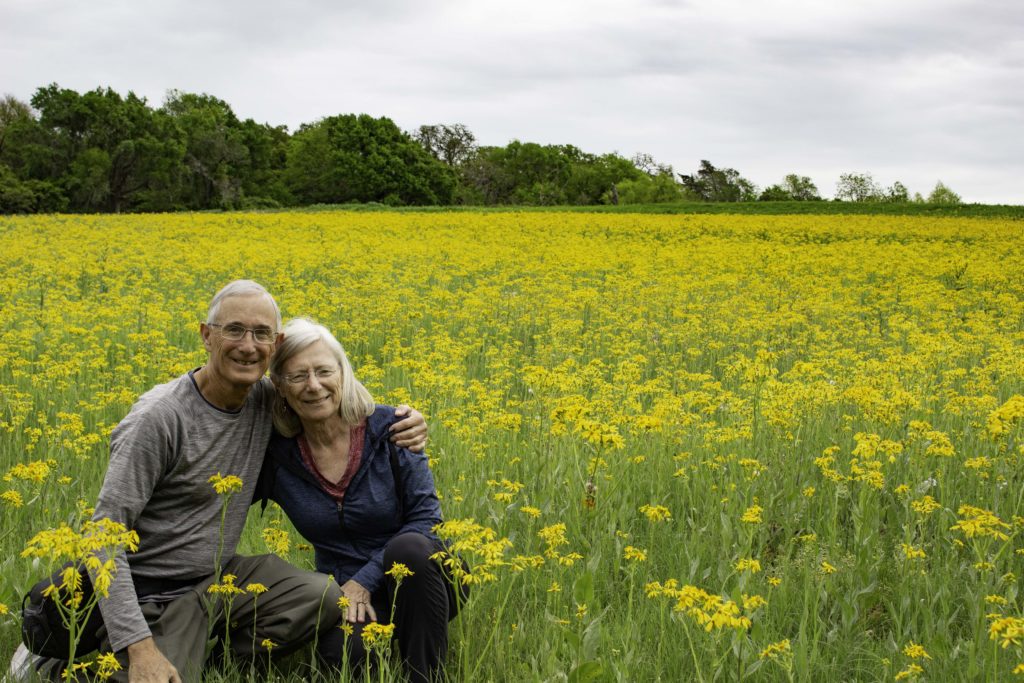






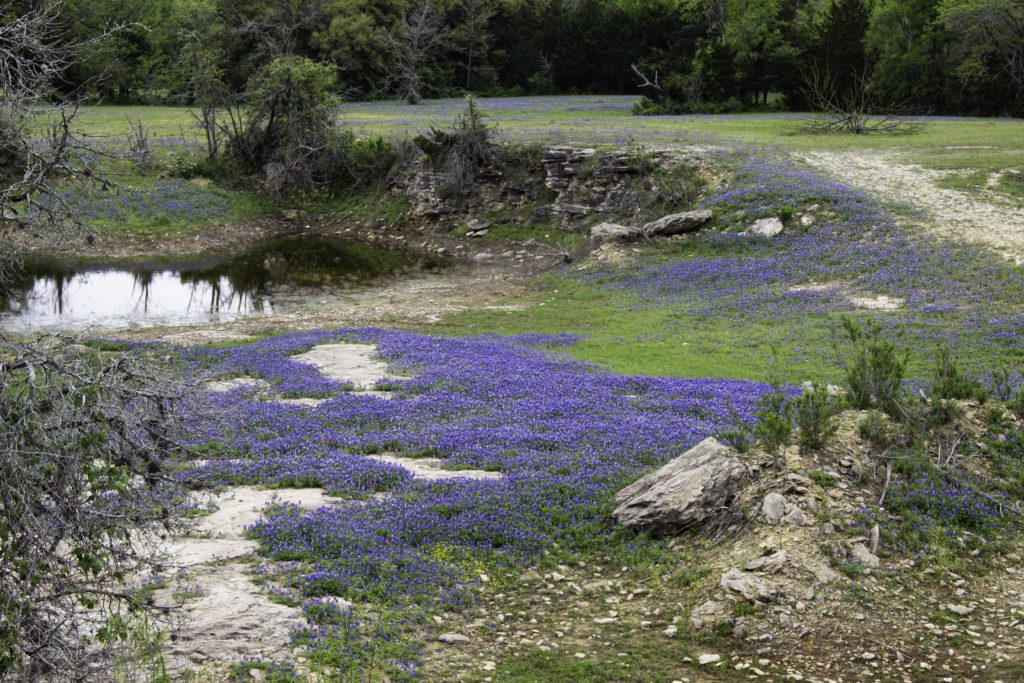





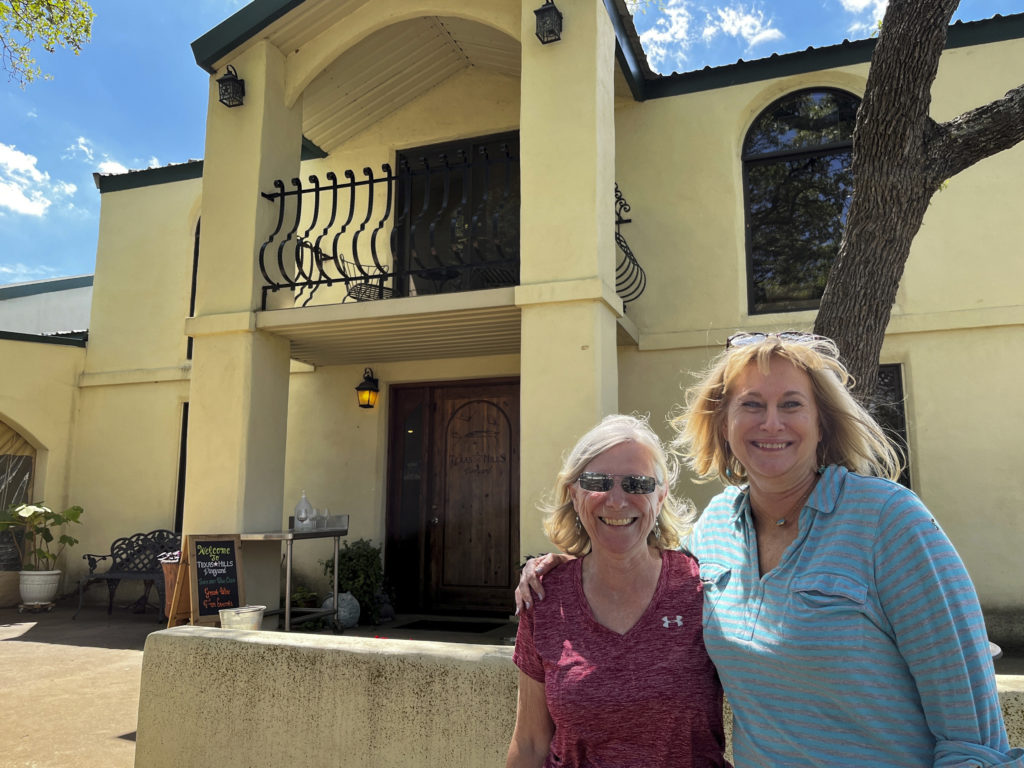



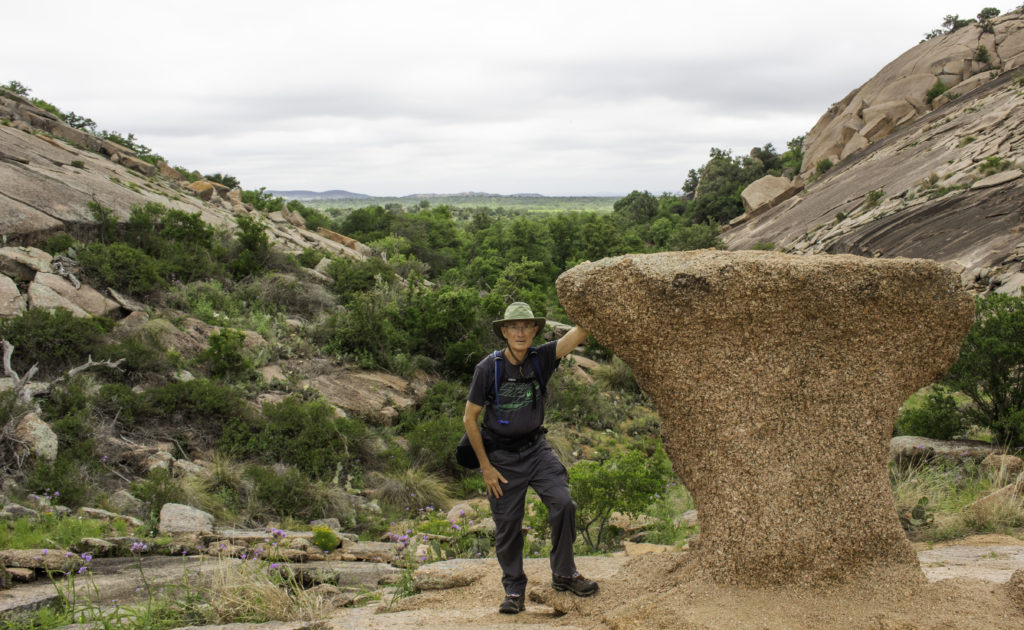

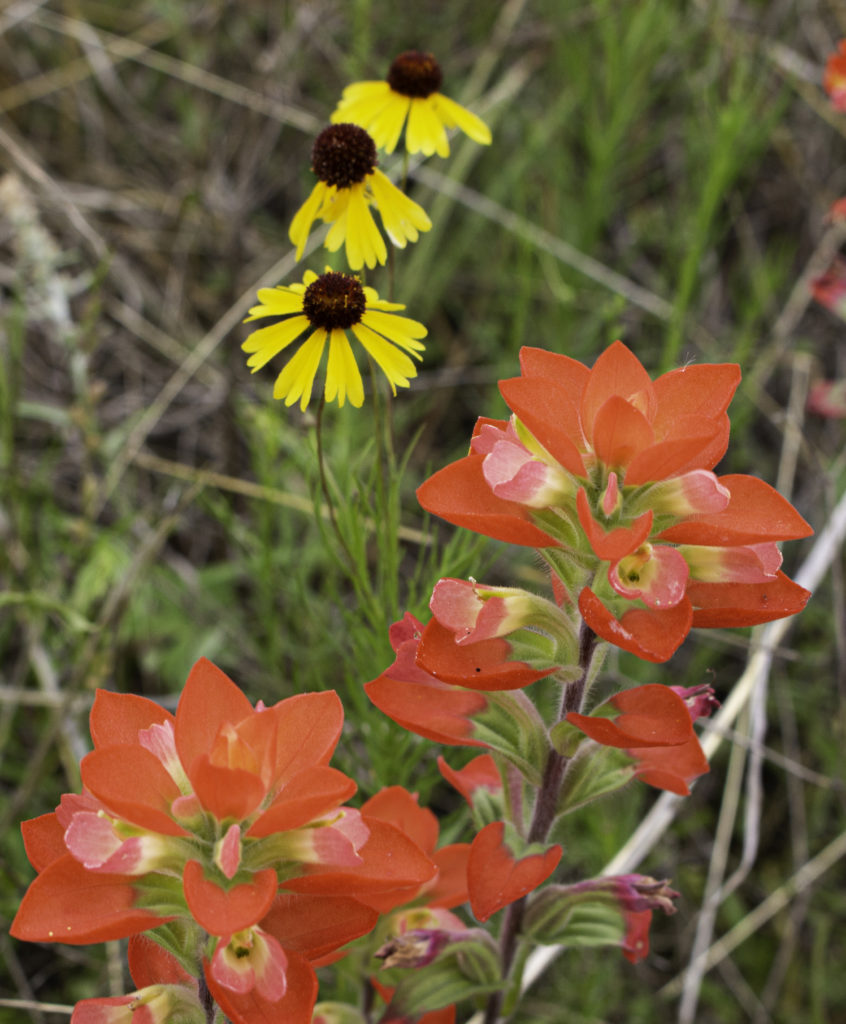
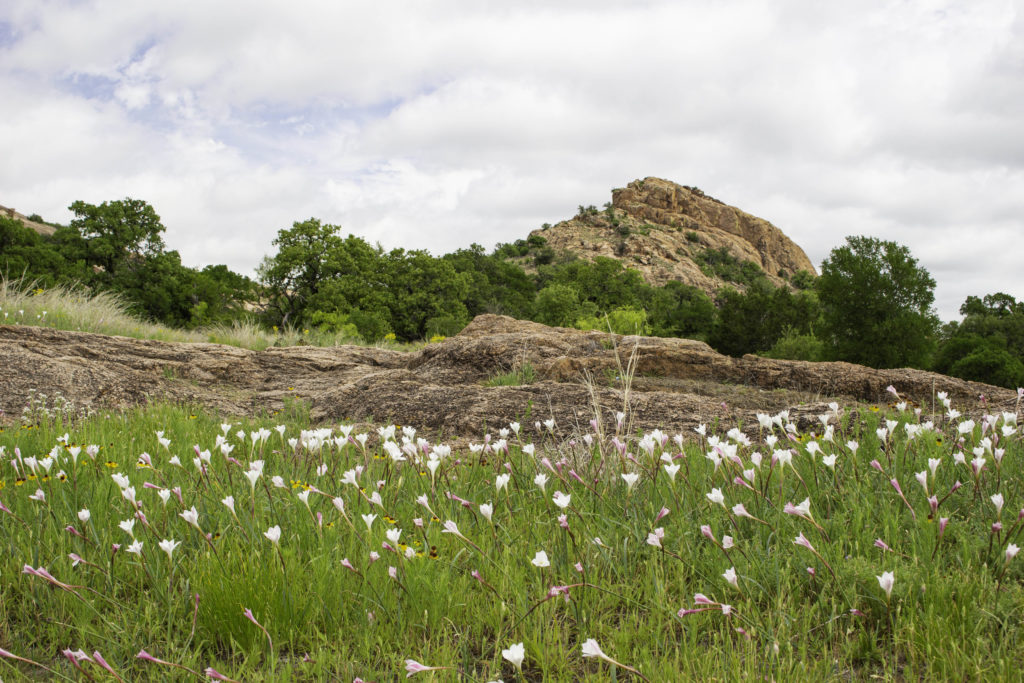






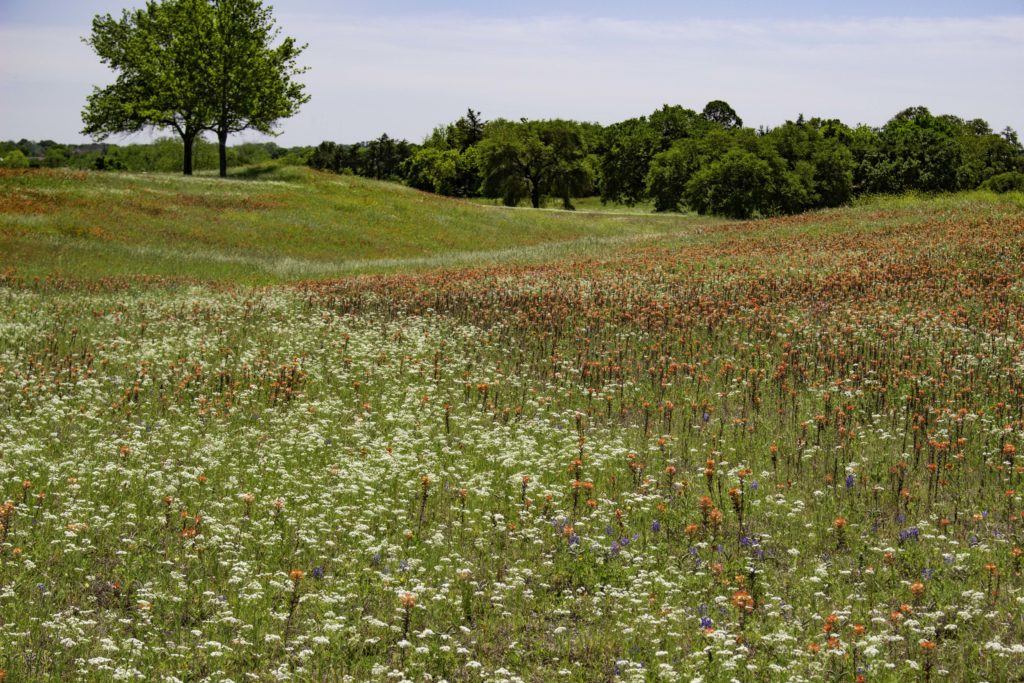


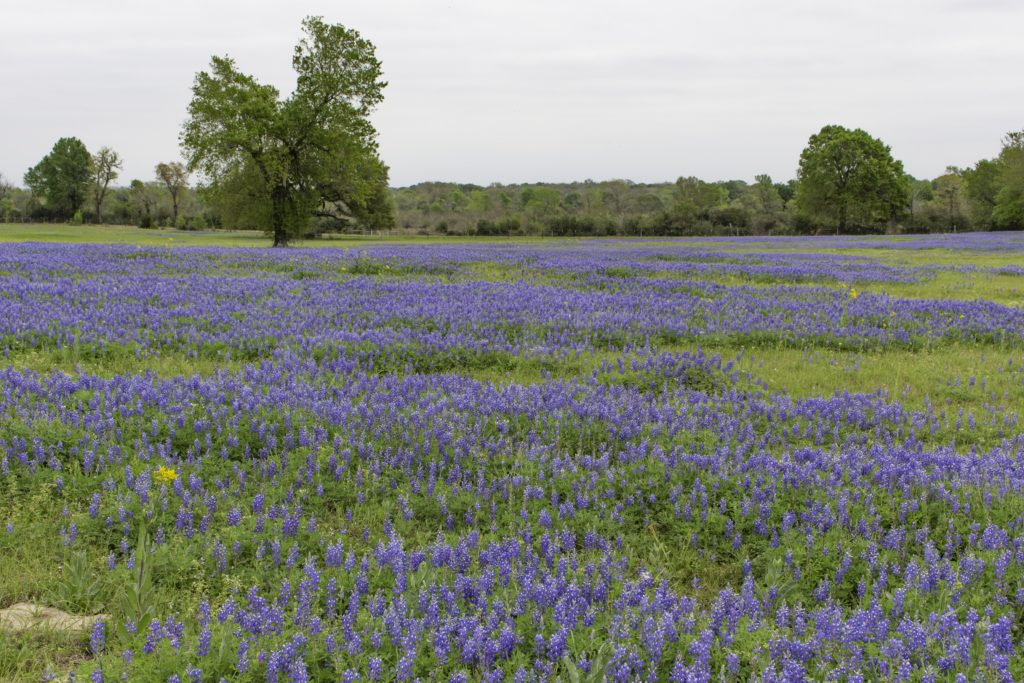
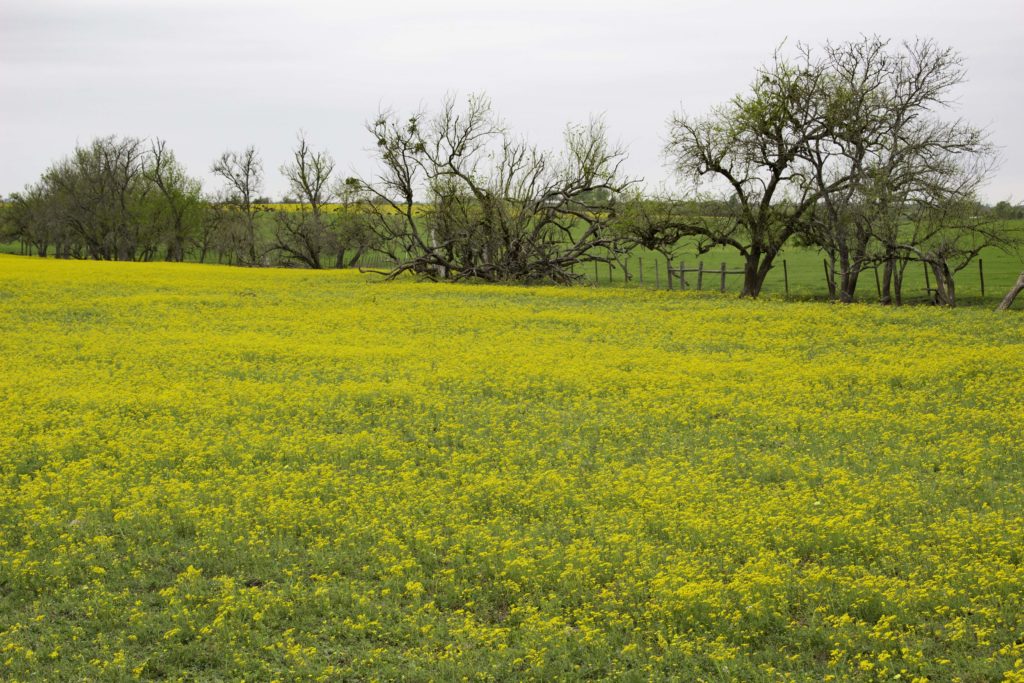
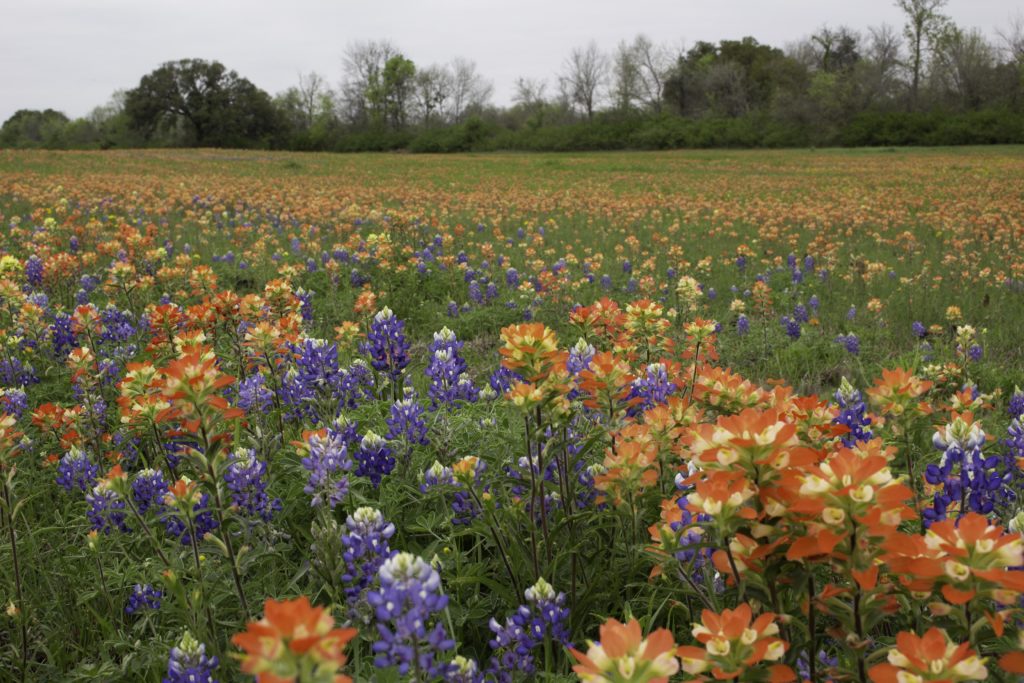
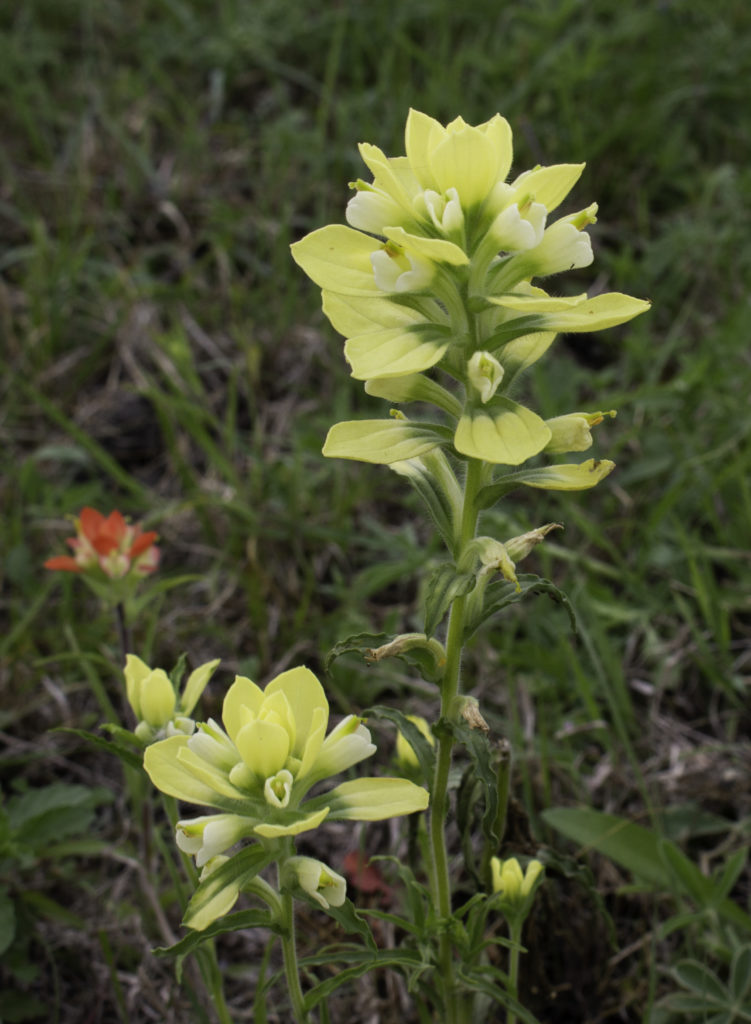
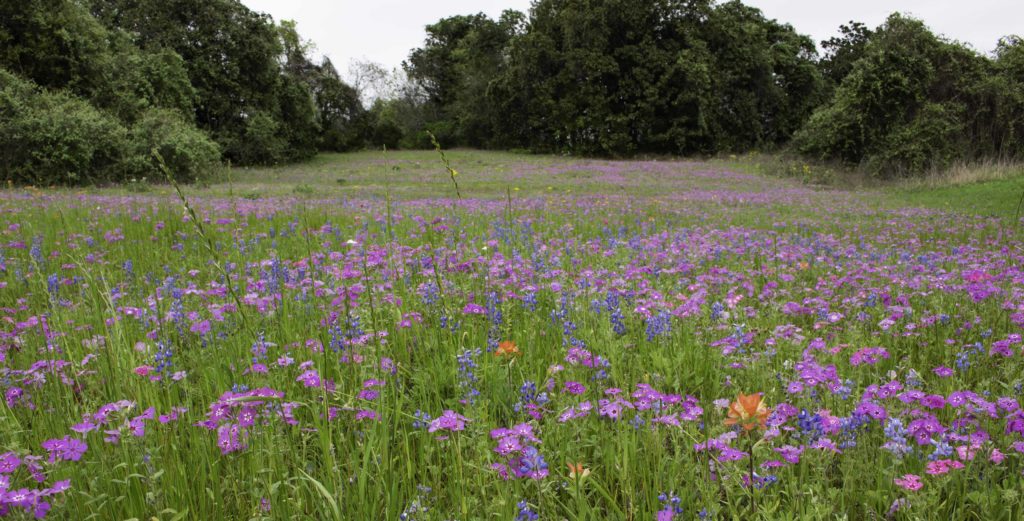


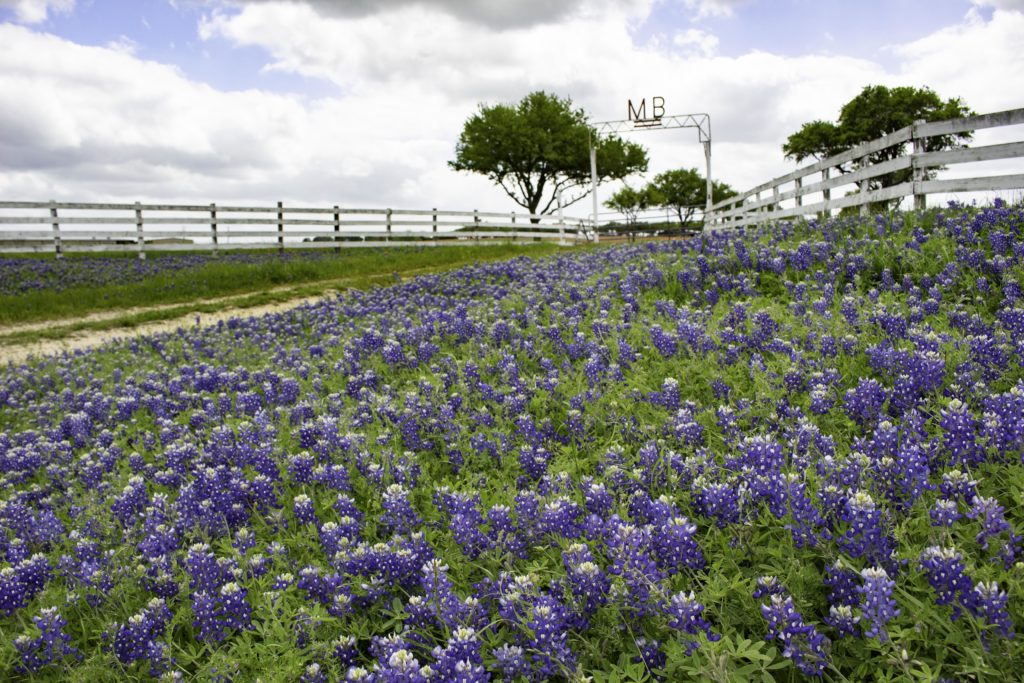

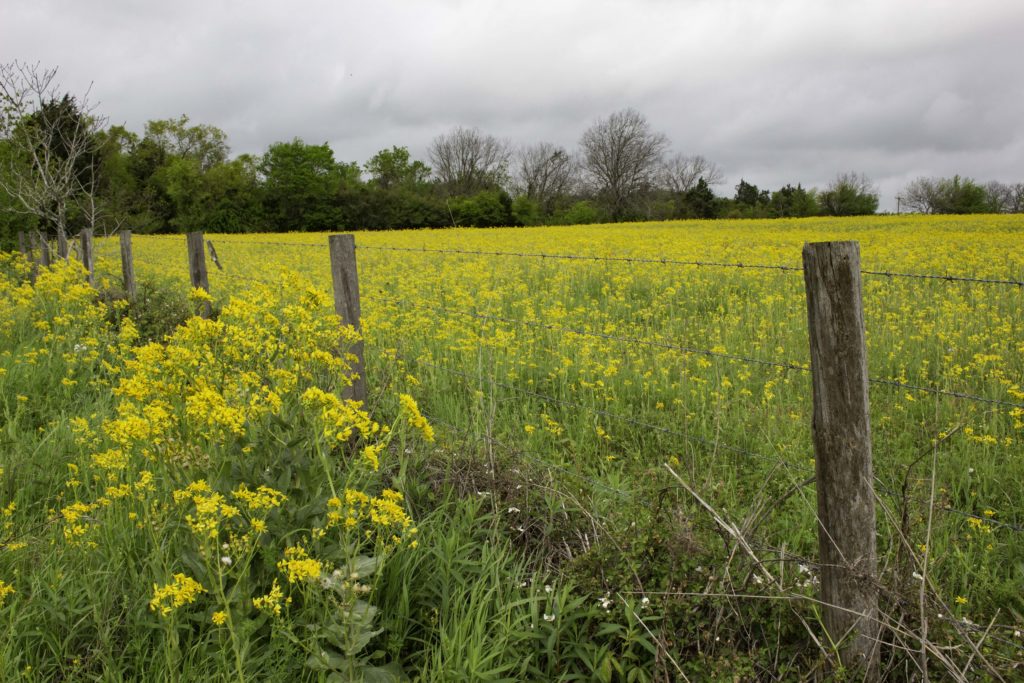
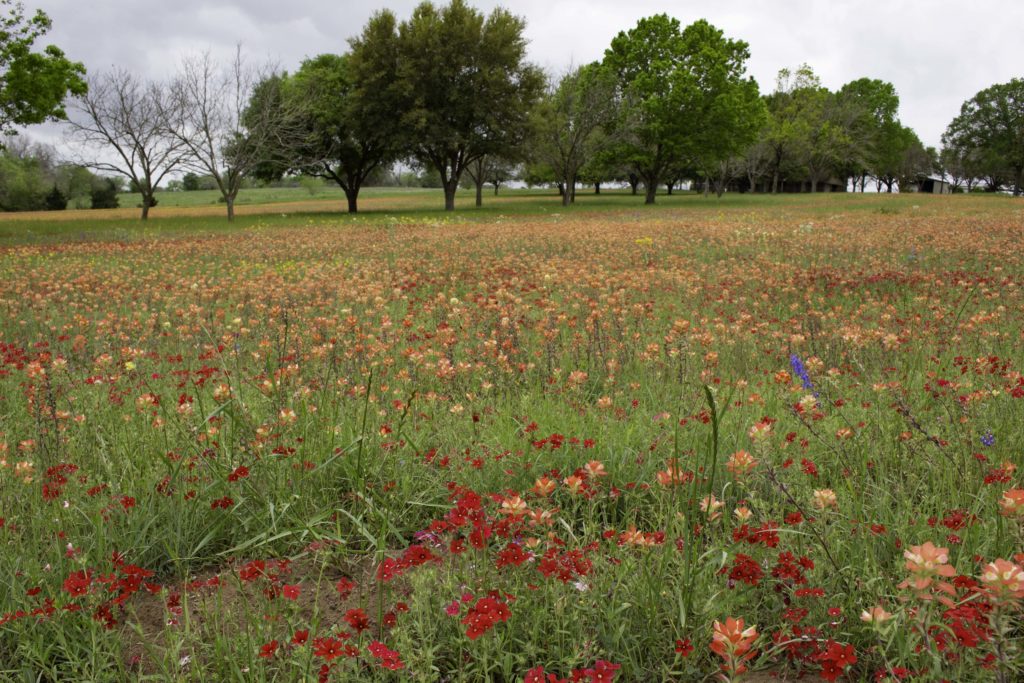



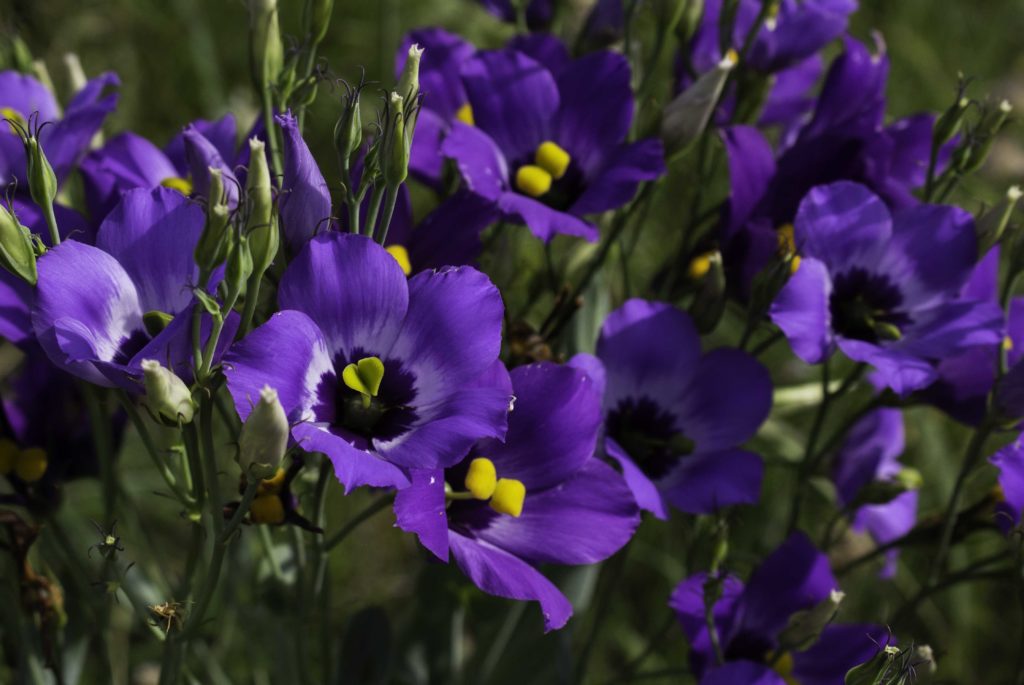

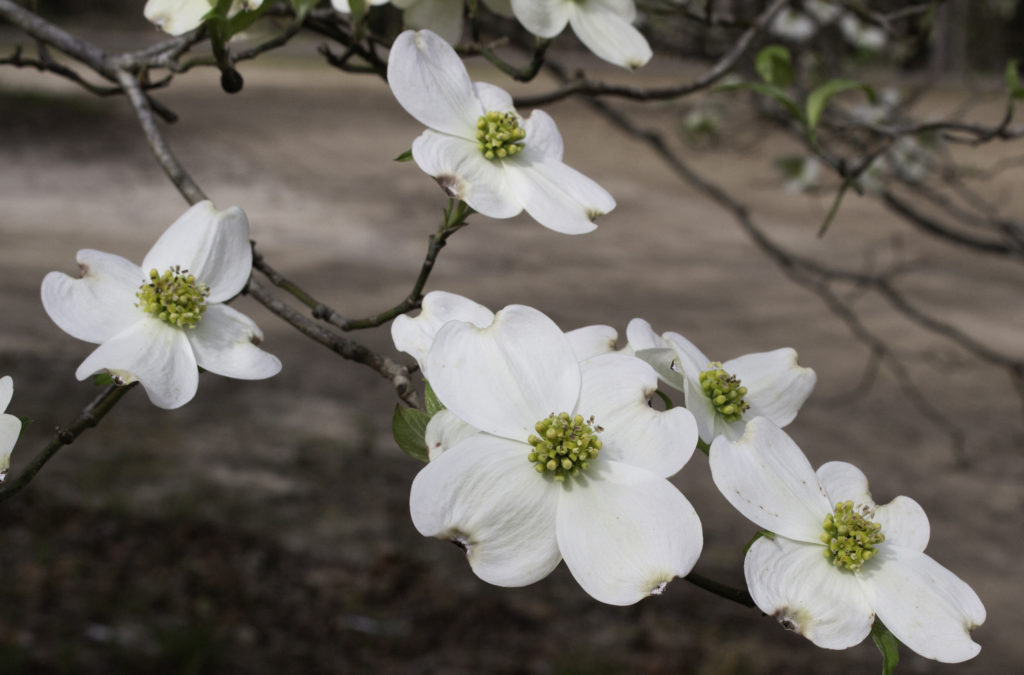














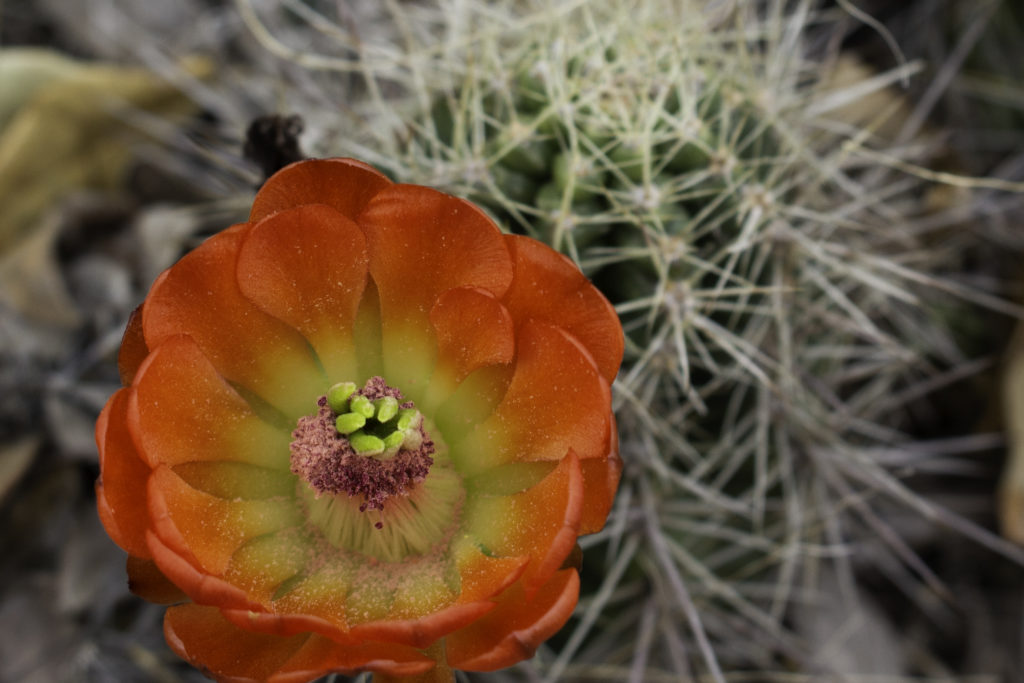





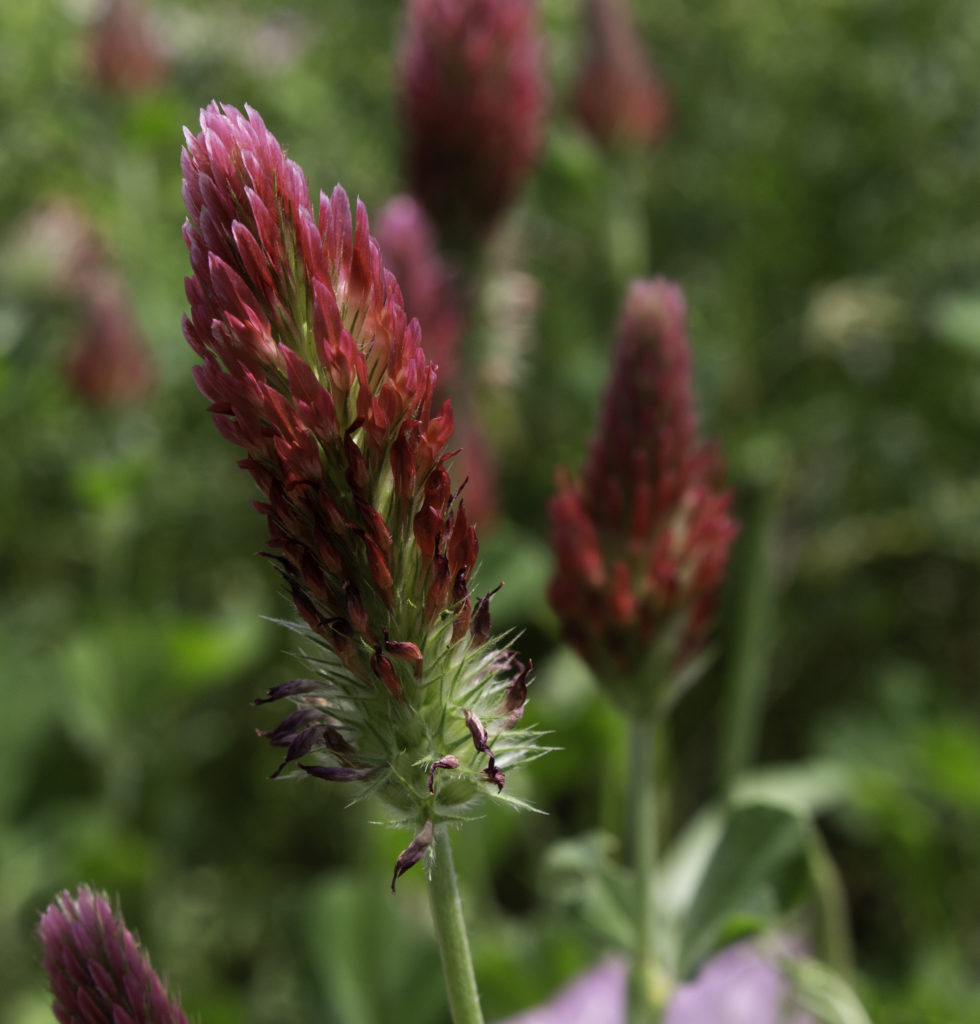

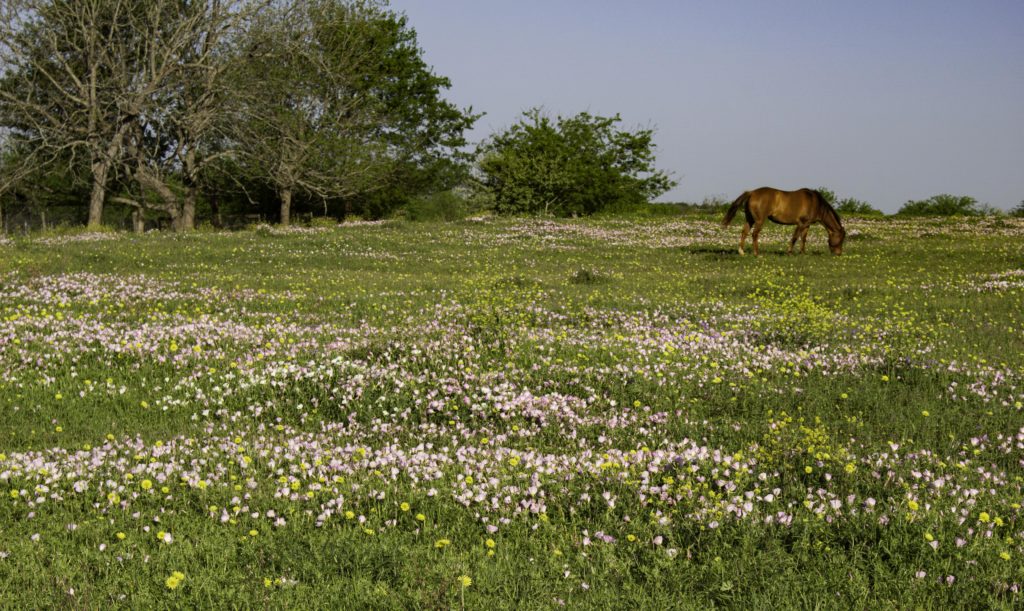



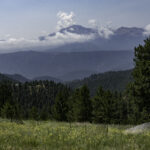
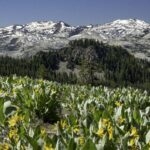
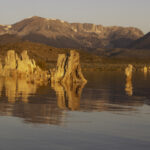
THANKS for the wonder trio around the Texas hill country looking at wildflowers. Next best thing to being there.
We also learned a lot of the names of the beautiful flowers we love.